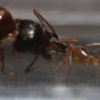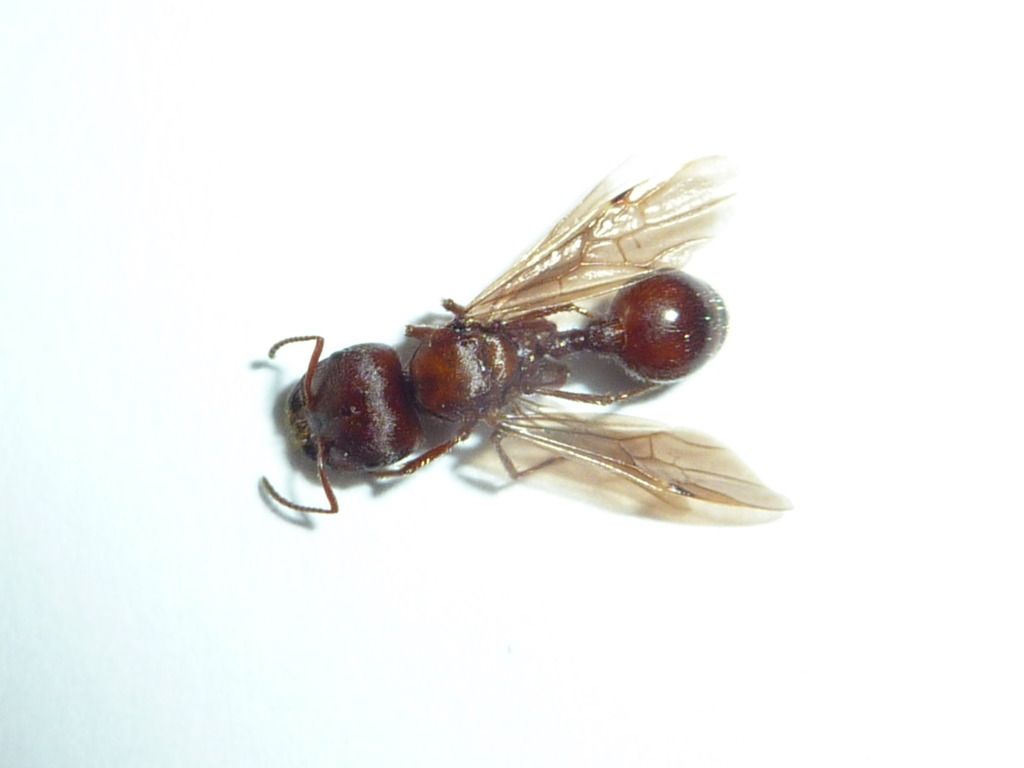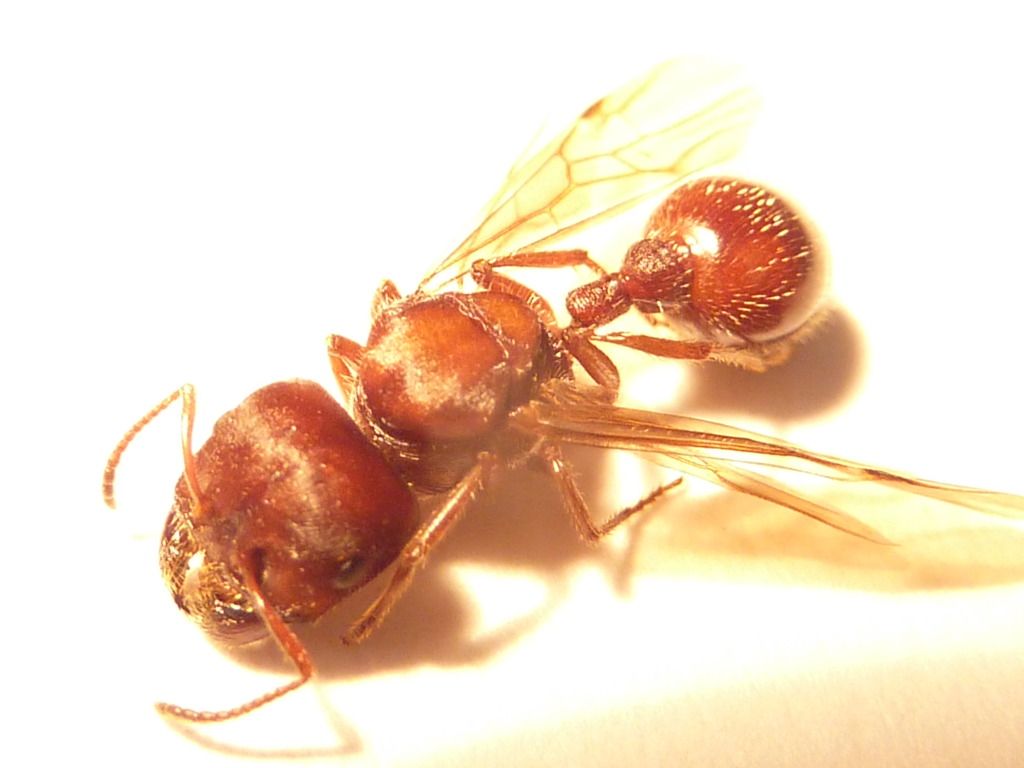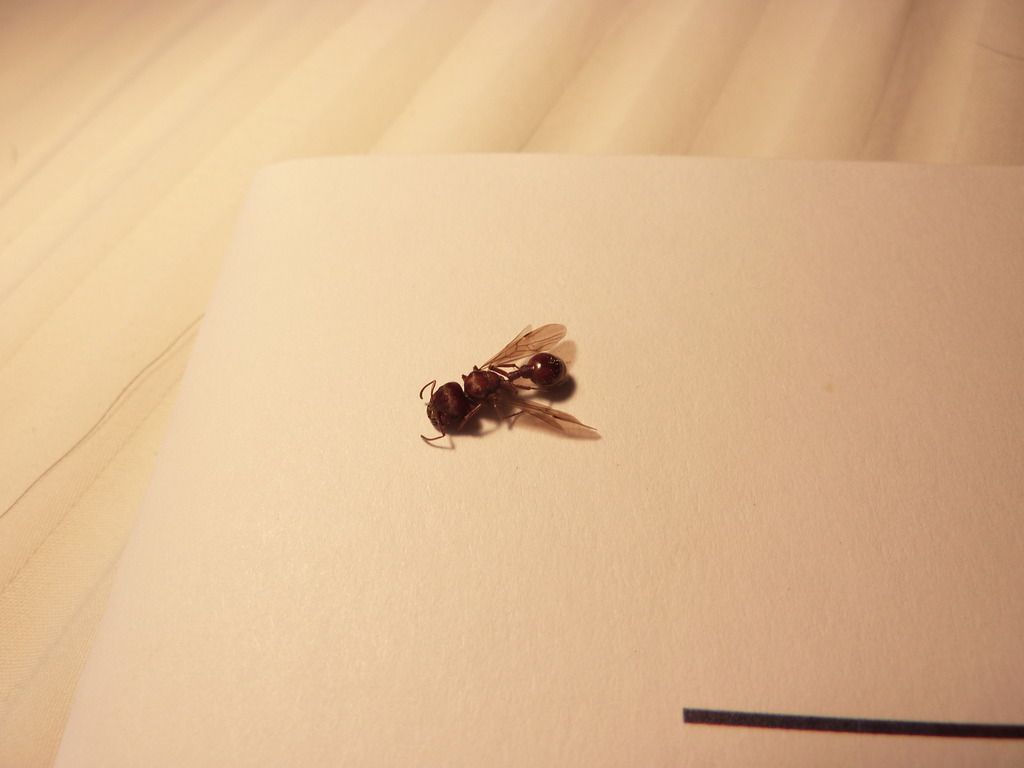Hello all,
I've taken a small break from Formiculture for the last week or so, but not from anting. My brother and I have still been blackilighting and looking for queens in the mornings and afternoons, and we have had much success! We've found droves of Tetramorium of course, as well as many Lasius interjectus and Camponotus spp. queens. We have also caught a number of queens whose documentation in Pennsylvania is either very limited or nonexistent, including:
- Colobopsis impressa
- Pheidole bicarinata
- Pheidole pilifera
- Forelius pruinosus
- Pogonomyrmex badius
I am very excited about the ants we've caught, especially the Colobopsis and the Forelius, however I'm rather surprised that they've made appearances here in Philly. The Pogonomyrmex badius queen unfortunately passed away, we caught her while camping in southern PA near WV, and she was very week to begin with; she must have been stepped on or burned by the sun on the hot asphalt she was found on.
Both Pheidole queens showed up to my blacklight in the suburb of Philly I live in; although it's odd considering the utter lack of any apparent Pheidole colonies near where I live. There's always a chance they're there and I just haven't seen them, but we have baited nearby areas religiously with seeds, cookies and sugar water for the past couple months and there's no reason we wouldn't have had any big-headed visitors. The first is definitely P. bicarinata, she's orange and slightly bulky but I'm not sure about the second. I've heard that P. pilifera is slightly smaller, with a back gaster and a less bulky physique, but she seems to be the same size, maybe even slightly larger and just as bulky. She is a darker color though, and her gaster is definitely blackish/brownish.
The Colobopsis find was just as obscure, but a little more reasonable than the Forelius. She was attracted to my blacklight last night, and I stuffed her into a standard TT setup. It's just a little odd we caught C. impressa; I had kept a close eye on the C. mississippiensis colony I had located in our yard but I had never noticed C. impressa.
The Forelius just freaked me out; I had never seen Forelius pruinosus in my life. I had a tee time for 6 am this morning, so I woke up very early and found several (3) queens at the golf course. I thought it was just some weird golf course phenomenon, so I scooped 'em up in the vials I had with me and stuffed 'em in my bag. I then went to Taco Bell after the 18 holes and at around 11:00 am, and caught two more on the sidewalk walking from the Taco Bell to my car. I then returned home, and caught one on the sidewalk in front of my house. These do also look like Dorymyrmex bicolor but I figured they're more likely Forelius than Dorymyrmex.
So, does anyone have any ideas on what I should do? Maybe the recorded documentation of these species on Antmaps.org and Antweb.org is just very outdated, and the ants have spread since then. Would it be beneficial to contact a registered taxonomist? Regardless, I'll definitely report these to the mating chart and if anyone has any insight, I would be very appreciative.
I am also in the market for a new, more reliable and preferably brighter black light than the one I currently own. If you have any recommendations, those would also be greatly appreciated. We tried using LED blacklight flashlights to illuminate a white sheet, but they just suck. Plain and simple. We would also be open to other types of lights, so don't feel like you have to restrict recommendations to only black lights.
Thank you all for your help, hopefully I have time to be more active now that summer has officially begun.























